Among the strengths of Log Veneers is the wide availability of wood veneers available in different sizes and different essences, always available for immediate delivery at our warehouse and, upon request, delivered to the customer thanks to a delivery service fast and reliable.
Our essences
Veneers for the furniture and furnishing industry
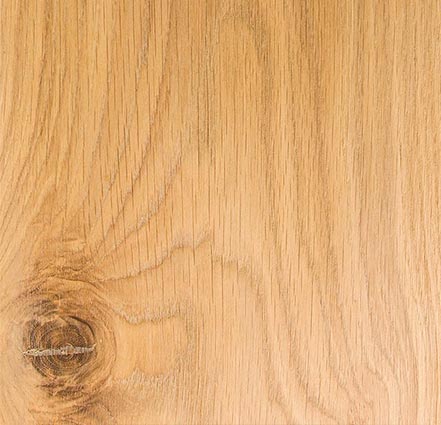
Botanical Name: Quercus Petraea
Region of Origin: Europe
Knotted Oak is a precious wood characterized by the presence of visible knots that give it a rustic and unique charm. Primarily originating from Europe and North America, this wood is widely appreciated for its strength and natural beauty.
It is used in a wide range of applications, from flooring to furnishings, adding warmth and character to spaces.

Botanical name: Quercus Robus
Region of origin: North America, Europe
Oak is known for its distinctive grain patterns that impart an elegant and sophisticated appearance. Available in various variants: striped, semi-flamed, and flamed. This wood offers a range of aesthetic options for design projects.
Originating from Europe or North America, this wood has a light brown hue and a uniform grain, making it ideal for a wide range of applications, from furniture to high-quality interiors.
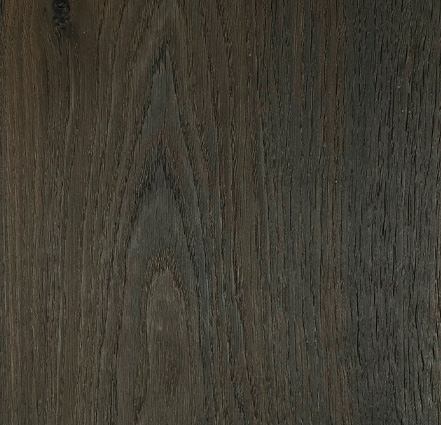
Botanical name: Quercus Robur
Region of origin: North America, Europe
Smoked Oak comes in two distinctive variants, Striped and Flamed, both characterized by a dark brown hue.
Striped Smoked Oak is distinguished by its distinctive stripes that impart an elegant and sophisticated appearance to the wood. Originating primarily from Europe and North America, this wood undergoes a smoking process that intensifies its color and natural beauty.
Loved for its strength and refined aesthetics, Striped Smoked Oak is a popular choice for high-quality flooring and furnishings.
On the other hand, Flamed Smoked Oak is characterized by spectacular flame designs that give the wood a unique and captivating appearance Also subjected to a smoking process, the wood features shades ranging from red to gold, adding a touch of elegance and originality to spaces.
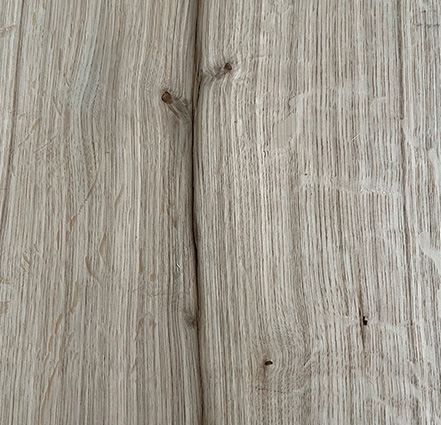
Botanical name: Quercus
Region of origin: Europe
Rustic Creased Oak “Rustik” is characterized by rustic creases that give the wood a natural and rustic appearance. Primarily originating from Europe, this wood has a brown hue with deep, irregular creases that add unique charm to spaces.
Loved for its natural beauty and durability, Rustic Creased Oak is often used in interior design projects seeking a rustic and welcoming touch.
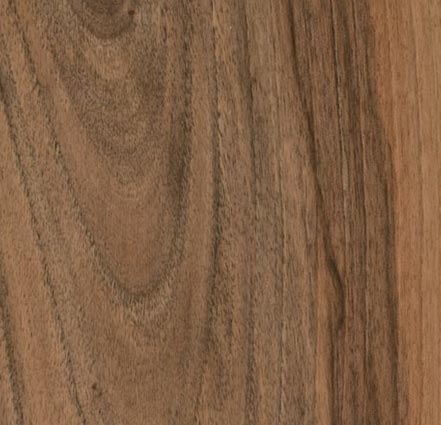
Botanical name: Juglans Regia
Region of origin: Europe
Albero di origine orientale ma molto comune in Italia e in tutta Europa. Sono piante molto longeve in grado di superare i 100 anni di vita. They have a thick, straight trunk and can reach heights of 30 meters. Walnut has white sapwood and the heartwood is brownish. It has pronounced grain, is hard and dense, quite heavy but elastic.
It is used for furniture, panels, ornaments, objects, flooring strips, and lends itself to refined and precious finishes, such as carved furniture, frames, and ornamental objects. It is the premier wood for cabinetmaking.
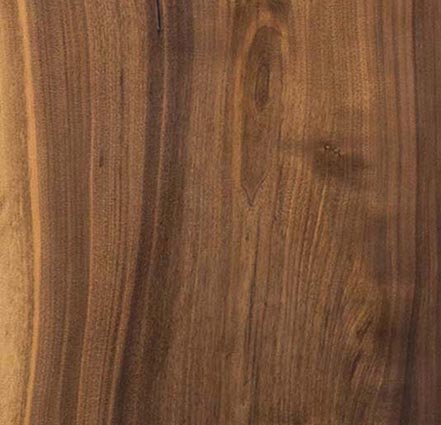
Botanical name: Juglans Nigra
Region of origin: North America, Europe
American Walnut is a precious wood with a dark brown hue and visible veins that give it a rich and sophisticated appearance. Primarily originating from North America and Europe, this wood is widely used in luxury furnishings and interior design projects for its natural beauty and durability.
Known for its strength and timeless elegance, American Walnut is a popular choice for flooring, furniture, and cladding.

Botanical name: Ulmus
Region of origin: North America, Europe
Elm is a wood characterized by a light to medium brown hue and visible veins that impart a warm and natural appearance to the material. Primarily originating from Europe and Asia, this wood is known for its rustic beauty and durability.
Used in a wide range of applications, from furnishings to interiors, Elm adds an authentic touch and character to spaces.
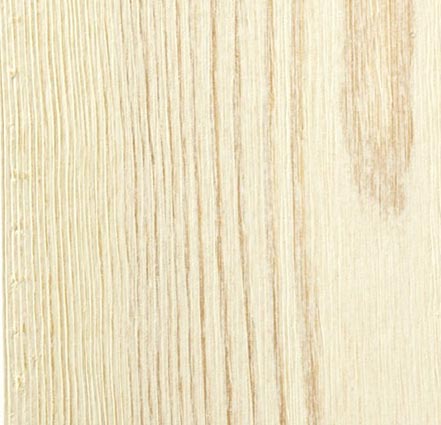
Botanical name: Castanea Sativa, Dentata e Crenata
Region of origin: Europe, North America
Fir is available in three unique variants: Striped, Flamed, and Knotless.
These woods, primarily originating from Europe and North America, offer a wide range of aesthetic options for a variety of projects. Striped Fir features distinctive stripes that impart a fresh and bright appearance to the wood, while Flamed Fir is characterized by spectacular flame designs that add a unique and captivating touch. Knotless Fir, on the other hand, features visible knots that add a rustic and authentic appearance to the material.
Versatile and durable, these woods are popular choices for flooring, cladding, and high-quality furnishings, thanks to their natural beauty and strength.

Botanical name: Fraxinus Excelsior
Region of origin: Europe
Grows in the flatlands and at mid-mountain level across Europe, in northern regions with a moderate climate, in north Africa and west Asia. The trunk can reach a height of 30m with a diameter of 60-100cm. Ash is a very hard but bendable wood from the strong species of the broad-leaved family. The wood has a pinkish, creamy white colour. It can have green undertones.
It cleans and polishes very well. It’s used for cabinet making, furniture, umbrellas, sports equipment like skis as well as in vehicles and other polished objects.
The Olive Ash species is popular, and unlike the Ash it has dark stripes at the heart of the trunk that can be seen in the older trees, much like the olive tree. In cabinetry Briarroot is highly sought after for its aesthetic appeal, soft and variegated.
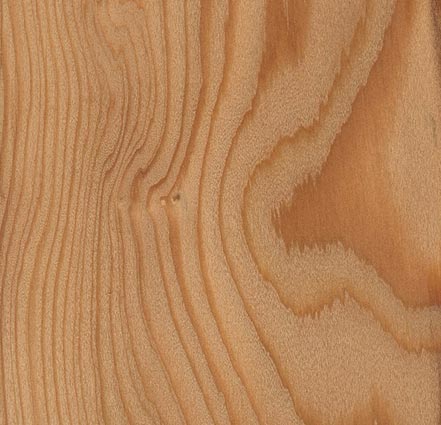
Botanical name: Larix
Region of origin: Europe, North America
Larch is a wood characterized by its strength and natural beauty. Available in various variants, including Knotless, Flamed, and Striped Larch, this wood offers a range of aesthetic options for design projects. With a hue ranging from light to medium and the presence of visible knots, Larch adds a rustic and authentic touch to spaces.
Flamed Larch features spectacular flame designs that give the wood a unique and captivating appearance, while Striped Larch offers distinctive stripes that add an elegant touch. Versatile and durable, Larch is a popular choice for flooring, cladding, and high-quality furnishings.

Botanical name: Robinia Pseudoacacia
Region of origin: Europe
A strong wood species from the broad-leaved family. Its trunk can reach a diameter of a metre. A wild species of Australian origin, however it grows well in Europe and the USA. The wood is a reddish-yellow colour, with a thin, compact grain; it is resistant to humidity and bendable.
It carves, finishes and polishes well. The wood is used in body shops to build wheels, spokes, posts, rungs and external construction.

Botanical name: Acer Pseudo Platanus
Region of origin: Europe
The typical tree of our mid to low mountain forests. It can reach a height of 30 meters with a diameter of 1 meter. The wood is almost white or yellowish white. Due to the effects of light and air, it yellows significantly.
The radial figures stand out particularly in quarter-sawn cuts. Its origin is Europe, particularly in southern Sweden, but it can also be found in Asia Minor. It is often dyed and polished and used in various colors for a range of furnishings including furniture, chess boards, turned objects, panels, musical instruments, and parquet flooring.

Botanical name: Acer Saccharum Nigrum e Rebrum
Region of origin: North America
Maple wood is characterised by poor oxidation (therefore its colour doesn’t change much over time). Being light in colour it is used mainly in modern, hi-tech environments.
Generally the Acer Negundo or Box Elder, a native North American species is more solid and harder than its European counterpart and therefore is more suitable for places that undergo greater stress.
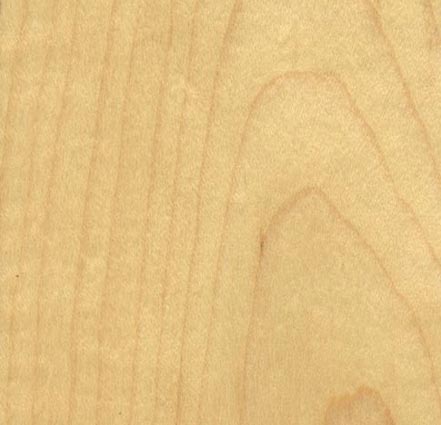
Botanical name: Betula Pendula, Betula Pubescens
Region of origin: Europe
Birch trees need lots of light, however they do not require rich soil and are therefore often found in sandy or wetlands. The wood has a light colour and is not very resistant to humidity.
It is used for veneers or plywood to make furniture and for interior design. It is one of the most resistant of the soft woods and is good for woodturning. The trees grow in Eastern Europe (from Scandinavia to Siberia) and North America.
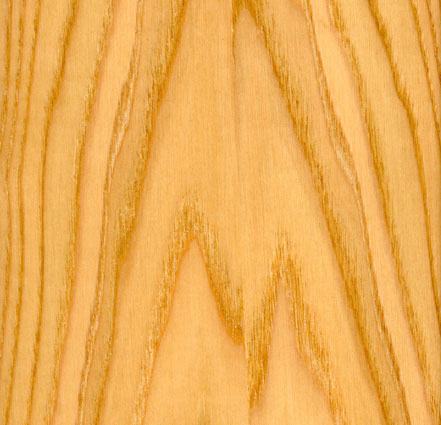
Botanical name: Castanea Sativa, Dentata e Crenata
Region of origin: Europe
Dark wood, excellent for furniture and, being a durable weather-resistant wood, it also great for outdoors. The chestnut tree is popular in regions across Italy and can also be found in southern Europe, northern Africa and Asia Minor.
The wood is used for flooring, rustic furniture, floorboards, doors and windows. Over the last hundred years a disease has decimated the species.
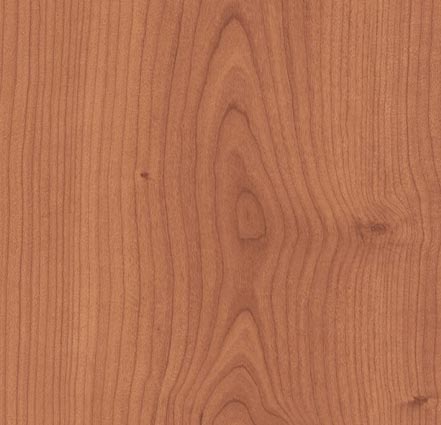
Botanical name: Prunus Avium
Region of origin: Europe
A strong wood species from the broad-leaved family. The wood has an orange or reddish-brown colour with a compact hard grain and a regular grain. The wood, however, tends to change shape.
It is used for fine cabinet making, musical instruments, pipes, valuable furniture and furnishings. Cherry wood veneers are used to cover fine furniture. The colour of the wood remains unchanged over time, unlike the American Cherry. Origin: throughout Europe, especially Eastern Europe where there are more natural forests.

Botanical name: Prunus Serotina
Region of origin: North America
The American Cherry springs up spontaneously in the northeast hills of the USA. The Cherry in the north of Pennsylvania is renowned for its color and almost nonexistent presence of gum. The trees produce small cherries in September that are only eaten by birds.
The wood has a rosy-brown color with a fine grain and medium texture. It is used for veneers or planks for making furniture, panels, and furnishings.
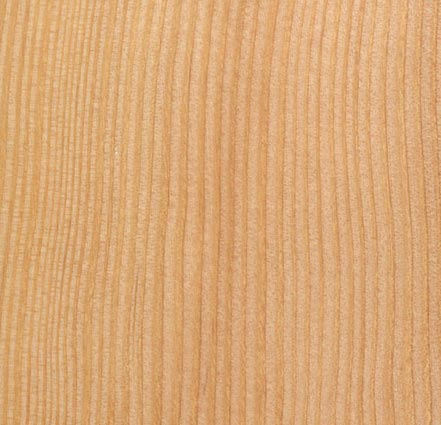
Botanical name: Pseudotsuga Menziesii
Region of origin: North America
These trees grow quickly and reach a height of 60m and a diameter of 2m with a regular, straight trunk. The wood has a dark yellow colour, a smooth texture and a straight grain. It is easy to work with as it is a solid wood, known for its stability thanks to its shape and size. The Douglas fir, also known as the American fir, quite similar to the Larch, grows in the Western Forest of North America, but has been cultivated in Europe for many years.
The wood is used for doors and windows, fixtures, furnishing, carpentry and used to build marine structures, both as lumber and plywood.
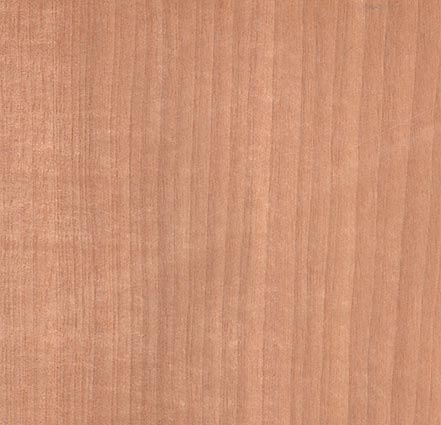
Botanical name: Lovoa Trichilides
Region of origin: Africa
A tall tree that grows in the tropical forests of West Africa.
The wood has a reddish-brown colour with a straight grain and a smooth texture. Before being used the wood is treated with preservatives. Although it is known in Italy as “Noce Tanganika” (Tanganyike Walnut), it has no connection to the walnut. It must be stained to obtain a walnut tone.
The wood is easy to work with. It is used for furniture, doors, panels, decorative veneers. It is largely used as flooring too.
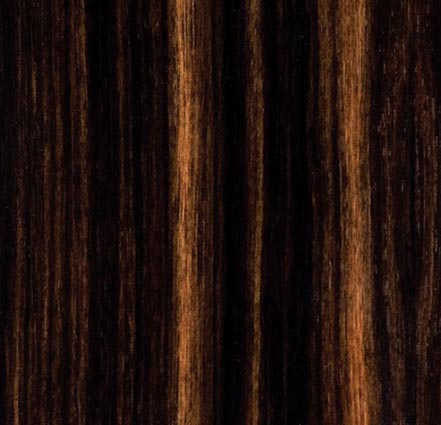
Botanical name: Diospyros Celebica e Rumphi
Region of origin: Asia
A very hard black wood that is heavier than water and therefore it does not float. An African species that grows in Gabon, Cameroon, Nigeria, Zanzibar and the Congo.
The wood turns nicely on a lathe, works well for marquetry and for making special furniture. Black ebony is highly sought-after in cabinetry for making furniture, sculptures, chess pieces, piano keys, clarinets and flutes. This wood is mainly used for logs and solid wood.
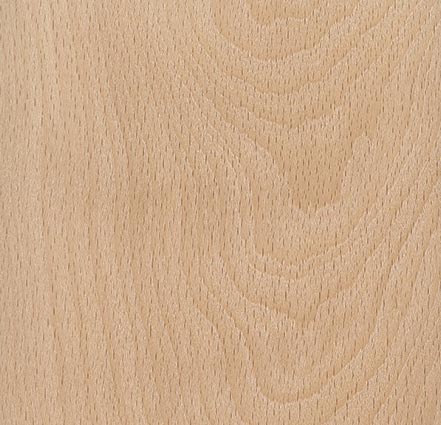
Botanical name: Fagus Sylvatica
Region of origin: Europe
Reddish yellow in colour with a normal structure and straight grain.
Wood from older trees has a deeper red tone. As a hardwood, it can be used as an alternative to fir, for flooring, furniture, carpentry, and internal doors and, once tarred, for railway sleepers and water management.
Beech is used for making curved chairs, carpentry and cabinetry for a variety of woodwork. Region of origin: America, Europe and Japan
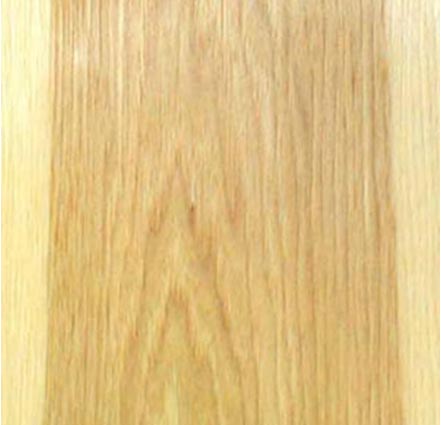
Botanical name: Carya Ovata
Region of origin: Nord America
Grows in North America and Mexico.
The sapwood has a white or pale brown colour while the heartwood ranges from brown to brown with red tinges. It has a straight grain and a medium texture with an opaque surface.
Hickory is a fine wood, very hard and bendable and is often attacked by insects. The wood is steamed for bending. Also used for making sports equipment, handles, golf clubs and stairs.
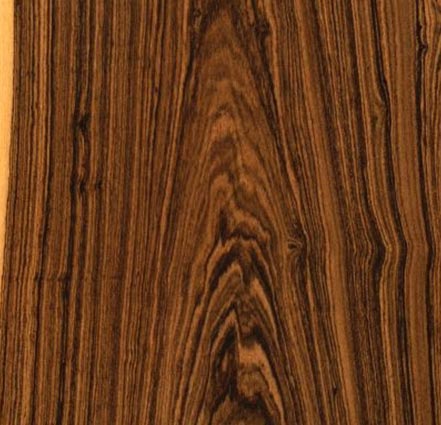
Botanical name: Nectandra Mollis
Region of origin: South America
The wood has a uniformed yellowish-brown or greyish-brown colour with darker, very decorative stripes and flames. It is a heavy, compact, hard wood. It has a smooth texture and varied grain.
The wood is used for carpentry destined for the outdoors, boat building and strip flooring. Louro Preto grows in Central America, Mexico and South America (Bolivia, Ecuador and Brazil).

Botanical name: Swietenia Jacq.
Region of origin: Africa
Enormous trees that grow in tropical forests in central and western Africa. It is one of the many African mahogany species like sapeli and sipo.
The colour can be a reddish-brown or a dark red. The wood is used for furniture, building boats, stairs, flooring, fixtures, panels and decorative veneers. Over the past few years its value has increased. Italy is a big importer of this wood.
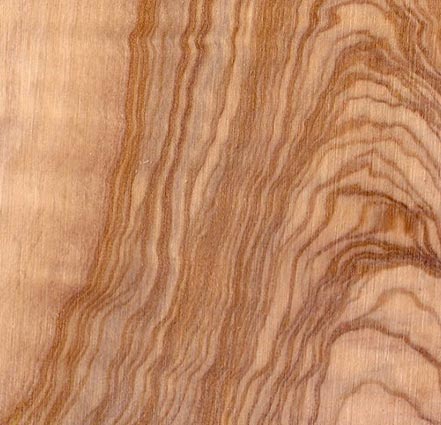
Botanical name: Olea Europaea
Zona di provenienza: Europa
Hardwood, characterized by high density and excellent resistance to stress. It provides extremely compact hard essence. Olive wood has a yellowish color veined with darker lines and is pleasantly fragrant.
Highly prized in cabinetmaking, olive wood provides splendid performance in marquetry, furniture construction, and turned objects.

Botanical name: Alnus Glutinosa
Region of origin: Europe
A small-sized tree, generally 8/10 meters tall and not very long-lived. Alder is native to Europe and the American Pacific Coast. It has a reddish-beige color, hard and compact wood with straight grain and fine, uniform texture.
It is suitable for piling (highly water-resistant) and is also used for furniture, baseboards, turned objects, and decorative veneers as a substitute for pear wood.
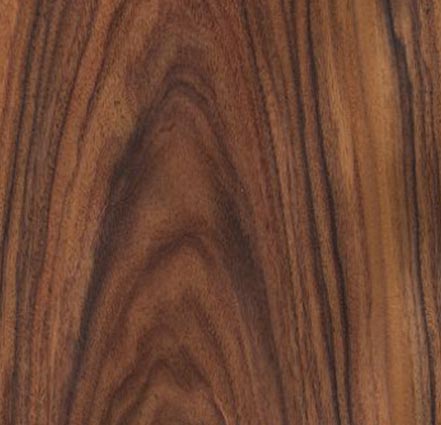
Botanical name: Machaerium Seleroxy
Region of origin: South America
Rosewood, with its brown color and reddish streaks that tend towards black, is a very hard and porous precious wood that lends itself to good finishes.
Despite being a hard and compact wood, rosewood does not have high durability. Its hardness is due to the slow growth of the tree.

Nome botanico: Pyrus communis
Zona di provenienza: Europe
The Pear is a fruit tree and as such is low. It grows spontaneously in European forests and is mainly cultivated in Switzerland.
It is a compact wood, very heavy and resistant to woodworms. It does not deform. It is easily worked and does not splinter. It has a whitish color that tends to pink with evaporation, featuring unmistakable veins.
It is used as solid wood for precision tools, musical instruments in cabinetmaking, and as veneer for the construction of carved furniture.

Botanical name: Tilia Vulgaris
Region of origin: Europe
These are trees of considerable size, very long-lived, reaching up to 250 years. They have a robust trunk with a wide, branching, and rounded canopy.
There are several species: there is the European one, called common or wild (widespread throughout Europe, including Italy), and the American one (originating from North America). Fresh wood is white and then tends to darken with air, assuming a dark whitish-yellow color. It has straight grain with a fine texture. It is a soft and lightweight wood and is easily attacked by fungi, only partially resistant to insects, and poorly resistant to wear and moisture.
Linden is used for marquetry and fine carpentry work, for making clogs, toys, keyboard musical instruments, hat blocks, brush backs, and other small household items.
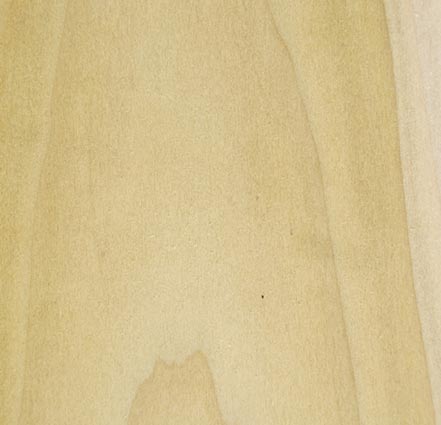
Botanical name: Liriodendron Tulipifera
Region of origin: North America
Tulipwood is a light and soft wood with a color that varies from light yellow to yellow-brown with greenish-gray areas at the heart. It is prone to attacks by fungi and insects. It is suitable for sawing and slicing.
It is used for interior furnishings and also for exterior cladding (in this case, the wood must be protected with appropriate impregnating substances). It is widespread in the southeastern parts of the United States, and it is also cultivated in other countries and in Europe.
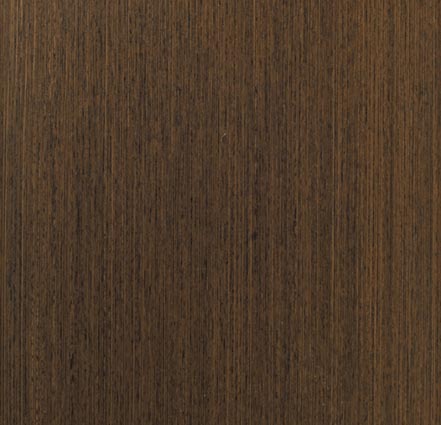
Botanical name: Millettia Laurentii
Region of origin: Africa
Wenge plants grow in the forests of Central and Western tropical Africa, particularly in the Democratic Republic of Congo (formerly Zaire), as well as in Congo, Cameroon, and Gabon. It is a dark brown wood with slight blackish stripes. Hard, heavy, and difficult to work with, it has straight grain with a coarse texture. With exposure to sunlight, it tends to lighten.
Wenge wood is suitable for heavy outdoor constructions and for parquet flooring, sometimes used as an alternative to teak. It has minimal dimensional changes and is a very stable wood. It is also used for luxury furniture, interior decoration, panels, and in fine woodworking for turned and decorative objects.

Botanical name: Pinus Palustris
Region of origin: North America
The four main species of Southern Yellow Pine are: longleaf pine (Pinus palustris), slash pine (Pinus elliotti), shortleaf pine (Pinus echinata), and loblolly pine (Pinus taeda).
Southern Yellow Pine produces its branches during growth, with the canopy forming about one-third from the top of the tree. As a result, the knots are tight and solid with few holes or dead knots in the actual wood. Originally known as Southern Yellow Pine, the wood has a distinctive color and grain; the sapwood ranges from white to yellowish, and the heartwood from yellow to reddish-brown. Coloration can vary depending on soil conditions, drying, and exposure to light.
Log Veneers Srl
P. IVA 05290460269
Capitale Sociale €20.000,00 i.v.
privacy | cookies | credits QWeb Agency
Indirizzo
Via Castelfranco Veneto, 81/6
33170 Pordenone (Italy)
Contatti
Tel: + 39 0434.319172
Email: info@logveneers.com
